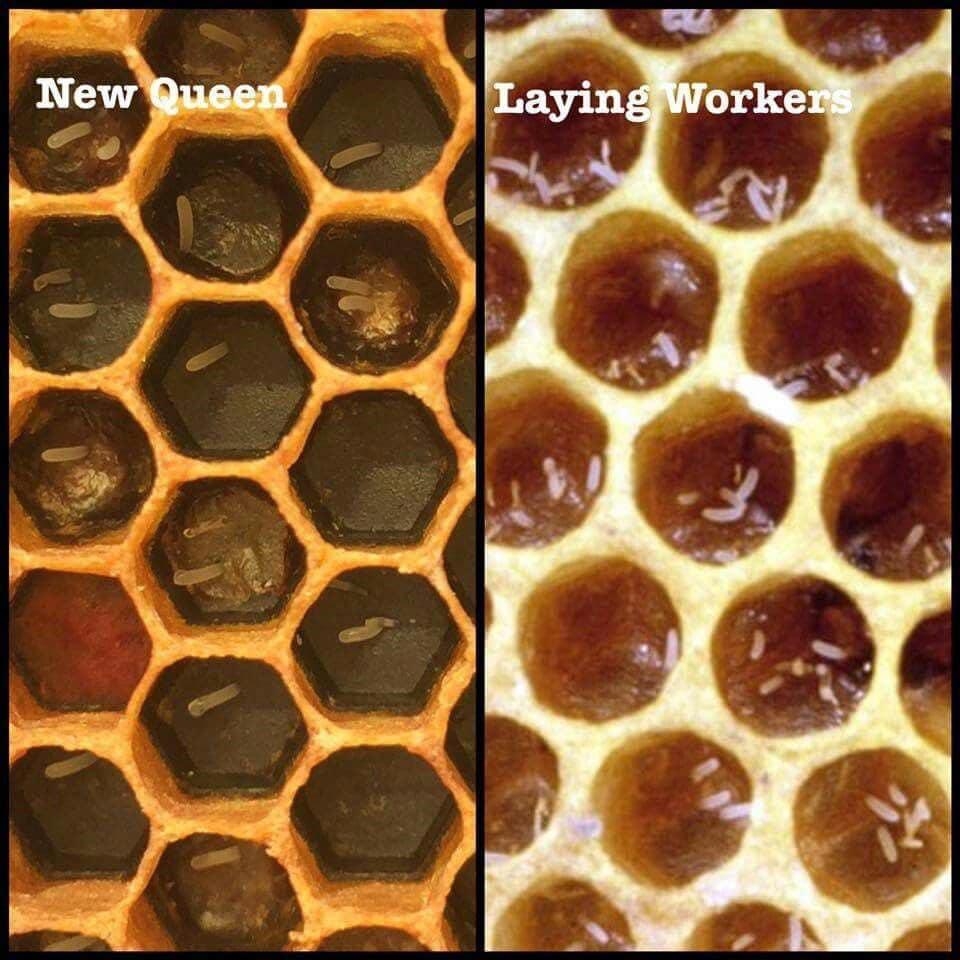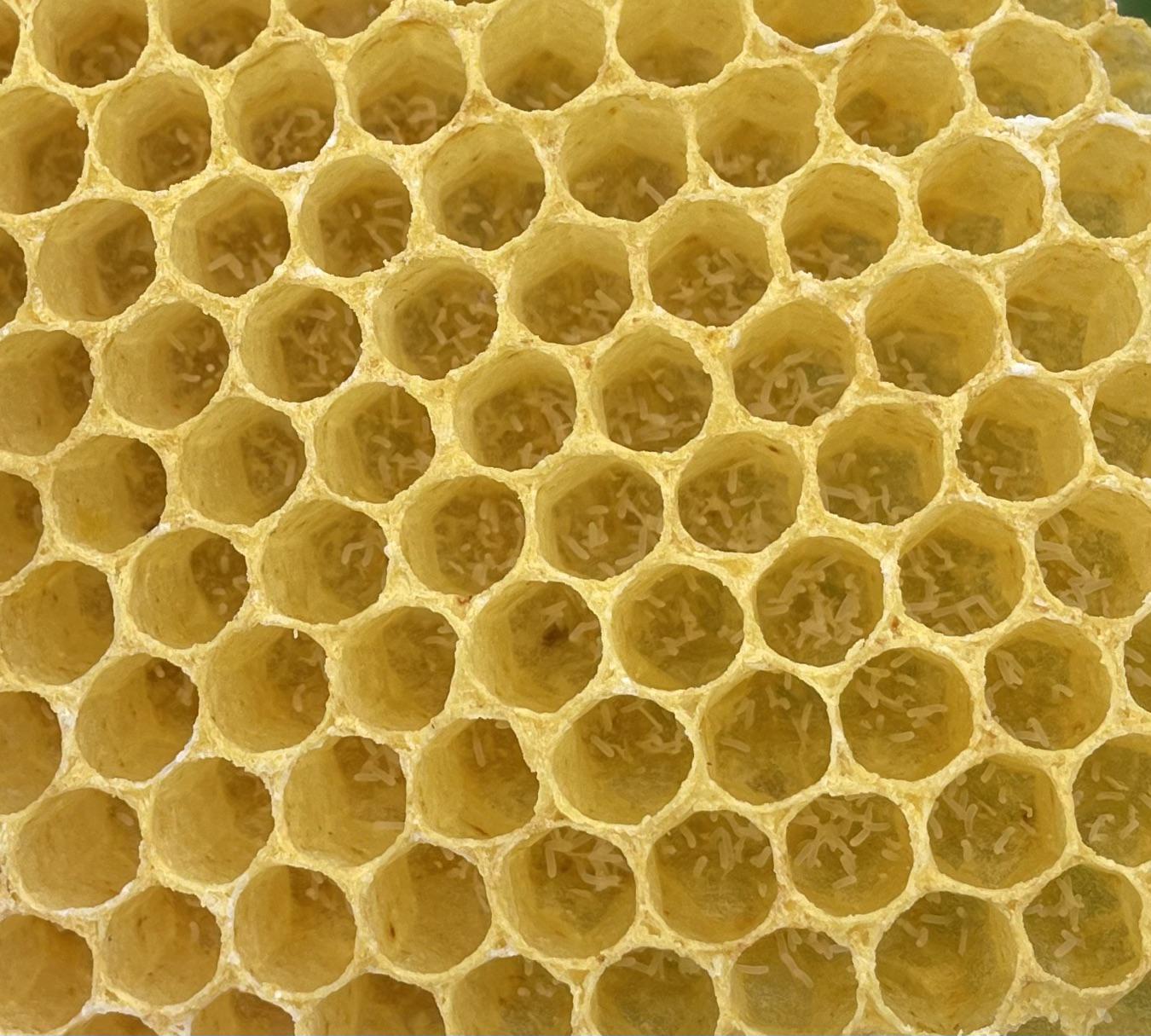r/Beekeeping Wiki
Drone Laying Workers (DLW)
Diagnosis (DLW vs New queen)
Worker abdomens are shorter than queens and so cannot reach the bottom of the cell. As a result, worker-placed eggs tend to be off-centre as the glue to the cell wall, eventually falling to the bottom.
How do you tell if it’s a rogue worker, or a new queen learning how to lay eggs? Look at the egg number per cell and their positions- new queens lay less eggs per cell, and are relatively orderly; when multiple eggs are laid in a single comb, workers will place the excess eggs into an empty cell. After 1-2 weeks, these larvae will be capped into worker brood, and only single eggs will be observed in comb. By contrast, more drones and drone comb will be present in laying worker colonies, with more chaos in the cells as the colony is “hopelessly queenless”.

Queens will sometimes lay 2 eggs in a cell, especially when they are newly mated. Occasionally, though rarely, you might even see three eggs in a cell. If you start seeing cells regularly with 3 or more eggs, you are almost certainly in a DLW situation.
Sometimes the cells inside DLW colonies will look like bowls of rice.
 Image credits u/Safe-Wolverine-4642
Image credits u/Safe-Wolverine-4642
Fixing it
Fixing a hive with laying workers is more complicated than “requeening your hive“. As far as the colony is concerned, Her Majesty is still there, she’s just laying drone eggs. The colony will not have an issue with this until the last worker dies (which will never happen, since the colony collapses sooner than that). Any introduced queen will be rejected and killed.
Shake out
- Smoke the DLW colony excessively. This will cause them to gorge themselves on honey.
- Remove the hive body from it’s hive stand, and shake the bees off onto the floor (it doesn’t need to be far away). Do not put the hive back onto it’s original stand.
- Go home.
Workers full of nectar will be able to beg their way into a nearby colony without much effort, bolstering worker forces of nearby hives. Any laying workers will either have their ovaries supressed by brood pheromones, or not be allowed entry into the hives.
Combine
- Perform a newspaper combine.
- Take two pages of newspaper, and place the sheets atop the queened hive.
- Poke some small holes (with a toothpick) into the papers to help bees chew through the material.
- Place the queenless hive box on top, and wait for around two weeks.
The pheromones from the queenright colony will spread throughout the queenless hive, and by the time the workers chew through, they would have adjusted to her scent and unite as one colony.
If you then wish to split into a second colony again, you may do so.